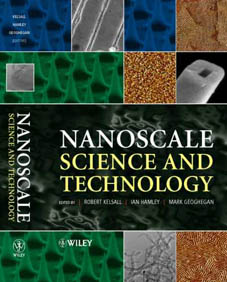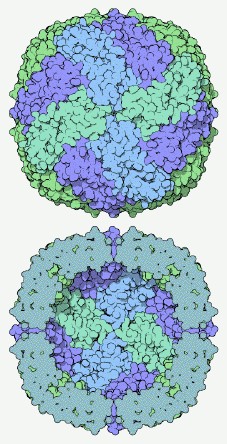The operation of most living organisms, from bacteria like E. Coli to multi-cellular organisms like ourselves, depends on molecular motors. These are protein-based machines which convert chemical energy to mechanical energy; the work our muscles do depends on many billions of these nanoscale machines all operating together, while individual motors propel bacteria or move materials around inside our cells. Molecular motors work in a very different way to the motors we are familiar with on the macroscopic scale, as has been revealed by some stunning experiments combining structural biology with single molecule biophysics. A good place to start getting a feel for how they work is with these movies of biological motors from Ronald Vale at UCSF.
The motors we use at the macroscopic scale to convert chemical energy to mechanical energy are heat engines, like petrol engines and steam turbines. The fuel is first burnt to convert chemical energy to heat energy, and this heat energy is then converted to useful work. Heat engines rely on the fact that you can maintain part of the engine at a higher temperature than the general environment. For example, in a petrol engine you burn the fuel in a cylinder, and then you extract work by allowing the hot gases expand against a piston. If you made a nanoscale petrol engine, it wouldn’t work, because the heat would diffuse out of the cylinder walls, cooling the gas down before it had a chance to expand. This is because the time taken for a hot body to cool down to ambient temperature depends on the square of its size. At the nanoscale, you can’t maintain significant temperature gradients for any useful length of time, so nanoscale motors have to work at constant temperature. The way biological molecular motors do this is by exploiting molecular shape change – the power stroke is provided by a molecule changing shape in response to the binding and unbinding of the fuel molecules and their products.
In our research at Sheffield we’ve been trying to learn from nature to make crude synthetic molecular motors that operate in the same way, by using molecular shape changes. The molecule we use is a polymer with weak acidic or basic groups along the backbone. For a polyacid, for example, in acidic conditions the molecule is uncharged and hydrophobic; it takes up a collapsed, compact shape. But when the acid is neutralised, the molecule ionises and becomes much more hydrophilic, substantially expanding in size. So, in principle we could use the expansion of a single molecule to do work.
How can we clock the motor, so that rather than just expanding a single time, our molecule will repeatedly cycle between the expanded and the compact shape? In biology, this happens because the reaction of the fuel molecule is actually catalysed by the the motor molecule. Our chemistry isn’t good enough to do this yet, so we use a much cruder approach.
We use a class of chemical reactions in which the chemical conditions spontaneously oscillate, despite the fact that the reactants are added completely steadily. The most famous of these reactions is the Belousov-Zhabotinksy reaction (see here for an explanation and a video of the experiment). With the help of Steve Scott from the University of Leeds, we’ve developed an oscillating reaction in which the acidity spontaneously oscillates over a range that is sufficient to trigger a shape change in our polyacid molecules.
You can see a progress report on our efforts in a paper in Faraday Discussions 128; the abstract is here and you can download the full paper as a PDF here (this is available under the author rights policy of the Royal Society of Chemistry, who own the copyright). We’ve been able to demonstrate the molecular shape change in response to the oscillating chemical reaction at both macroscopic and single chain level in a self-assembled structure. What we’ve not yet been able to do is directly measure the force generated by a single molecule; in principle we should be able to do this with an atomic force microscope whose tip is connected to a single molecule, the other end of which is grafted to a firm surface, but this has proved rather difficult to do in practise. This is high on our list of priorities for the future, together with some ideas about how we can use this motor to do interesting things, like propel a nanoscale object or pump chemicals across a membrane.
This work is a joint effort of my group in the physics department and Tony Ryan’s group in chemistry. In physics, Mark Geoghegan, Andy Parnell, Jon Howse, Simon Martin and Lorena Ruiz-Perez have all been involved in various aspects of the project, while the chemistry has been driven by Colin Crook and Paul Topham.

